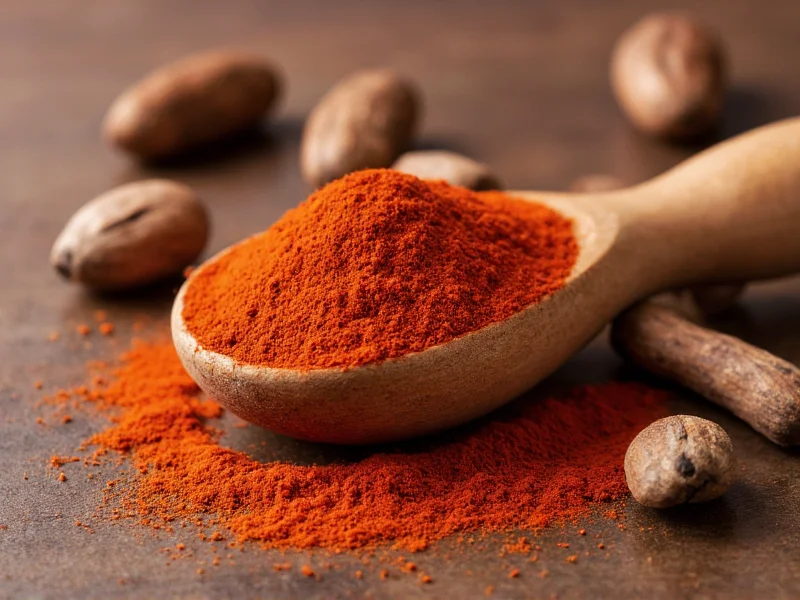When searching for \"allum spice,\" most home cooks and culinary enthusiasts are actually looking for information about allspice (Pimenta dioica), a versatile spice with a complex flavor profile that combines notes of cinnamon, nutmeg, and cloves. Alternatively, some may be seeking information about alum (potassium aluminum sulfate), a food additive primarily used as a pickling agent to maintain crispness in preserved vegetables.
Understanding Allspice: The True Culinary Spice
Allspice, despite its name suggesting a blend of spices, is actually a single spice derived from the dried berries of the Pimenta dioica plant, native to the Caribbean, Central America, and southern Mexico. The name \"allspice\" was coined by English explorers who noted its flavor reminiscent of a combination of cinnamon, nutmeg, and cloves.
When exploring allum spice culinary uses, it's important to recognize that authentic allspice offers several distinctive characteristics:
- Flavor profile: Warm, sweet, and complex with notes of cinnamon, nutmeg, cloves, and pepper
- Forms available: Whole berries (which retain flavor longer) and ground powder
- Storage: Keep in an airtight container away from light and heat; whole berries last up to 3-4 years while ground allspice maintains quality for 2-3 years
- Common culinary applications: Jamaican jerk seasoning, pumpkin pie spice, marinades, stews, and pickling blends
Allspice in Global Cuisine
Allspice plays a significant role in various culinary traditions around the world. In Jamaican cuisine, it's essential for authentic jerk seasoning. Middle Eastern dishes often incorporate allspice into meat rubs and rice preparations. European baking traditions use it in spice cakes, fruit compotes, and mulled wines.
For those wondering is allum the same as allspice, the answer is no—\"allum\" isn't a recognized spice term. The correct term is allspice, and understanding this distinction is crucial when following recipes or shopping for ingredients.
Understanding Alum: The Pickling Agent
Alum (potassium aluminum sulfate) is sometimes confused with allspice due to similar pronunciation. This food-grade compound has been used for centuries as a pickling agent to maintain the crisp texture of vegetables like cucumbers, beans, and cauliflower.
| Characteristic | Allspice | Alum |
|---|---|---|
| Nature | Culinary spice (berry) | Food additive (mineral salt) |
| Primary Use | Flavoring in cooking and baking | Crisping agent in pickling |
| Flavor Contribution | Warm, complex spice notes | No flavor (used for texture) |
| Safety Considerations | Generally recognized as safe | Use only food-grade; excessive amounts may cause bitterness |
When researching allum spice vs allspice, it's critical to understand that alum serves a completely different purpose in food preparation. While allspice adds flavor, alum affects texture without contributing taste.
Practical Guidance for Home Cooks
If you're looking for information on what is allum spice for a specific recipe, consider these practical tips:
- Check your recipe context: If the recipe involves baking, marinades, or spice blends, you need allspice. If it's a pickling recipe mentioning \"crisping agent,\" you likely need alum.
- Reading ingredient labels carefully: Allspice will be labeled as \"allspice\" or \"pimento,\" while alum will be labeled as \"food-grade potassium aluminum sulfate.\"
- Substitution guidance: If you need an allspice substitute, combine equal parts cinnamon, nutmeg, and cloves. For alum in pickling, consider using grape leaves or calcium chloride as alternatives.
Health Considerations
Allspice contains eugenol, which has antioxidant properties and may offer digestive benefits when consumed in culinary amounts. Some traditional medicine systems use allspice for relieving digestive discomfort.
Regarding alum, food-grade versions are generally recognized as safe in small quantities used for pickling. However, excessive consumption may cause gastrointestinal discomfort in sensitive individuals. Those with kidney concerns should consult healthcare providers about regular consumption of foods containing alum.
Where to Find Authentic Allspice
When searching for where to buy allspice, look for these quality indicators:
- Whole berries that are dark brown, uniform in size, and emit a strong aroma when crushed
- Ground allspice that's deep brown (not reddish) with a potent fragrance
- Reputable spice brands that specify origin (Jamaican allspice is particularly prized)
- Freshness dates on packaging (spices lose potency over time)
Specialty food stores, well-stocked supermarkets, and reputable online spice merchants typically carry quality allspice. For the best flavor, consider purchasing whole berries and grinding them as needed using a dedicated spice grinder.
Common Misconceptions Clarified
One persistent confusion involves the question is allum the same as allspice. The answer is definitively no—\"allum\" isn't a recognized culinary term. This misspelling likely stems from the similar pronunciation of \"alum\" and the expectation that culinary terms would end with \"-spice.\"
Another misconception is that allspice is a blend of spices. In reality, it's a single spice that naturally contains compounds found in multiple spices, creating its characteristic complex flavor.











 浙公网安备
33010002000092号
浙公网安备
33010002000092号 浙B2-20120091-4
浙B2-20120091-4